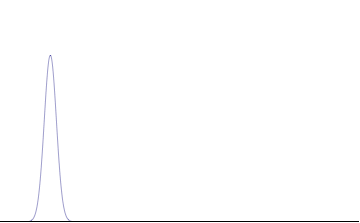In many situations, during the time interval in between a particle's initial and final states, the force acting on that particle can vary with time in a very complicated way where the details of the force over that time interval are unknown. The concept of energy enables us to think about systems which have very complicated forces acting on them. A particle could have a force acting on it described by a very general force function \(\vec{F}(\vec{r}.t)\); but by thinking about the energy of that particle we can understand the effects \(\vec{F}(\vec{r}.t)\) has on it.
In Newtonian mechanics, for any force function \(\vec{F}(\vec{r}.t)\), the force is related to potential energy according to the equations
$$F(x)=\frac{-∂V(x)}{∂x}$$
$$F(y)=\frac{-∂V(y)}{∂y}$$
$$F(z)=\frac{-∂V(z)}{∂z}.\tag{1}$$
We can express Equations (1) in terms of Newton's second law:
$$\frac{-∂V(x)}{∂x}=\frac{∂p_x}{∂t}$$
$$\frac{-∂V(y)}{∂y}=\frac{∂p_y}{∂t}$$
$$\frac{-∂V(z)}{∂z}=\frac{∂p_z}{∂t}.\tag{2}$$
Equations (2) represent the laws of dynamics governing any particle with potential energy \(V(\vec{r})\) due to the force \(\vec{F}(\vec{r})\).
According to De Broglie's equation \(p=\frac{h}{𝜆}\), the bigger the momentum of an object the smaller the wavelength of the wavefunction. Particles which are very massive have a lot of momentum and the wavefunction \(\psi(x,t)\) associated with them has a very small wavelength—meaning it is an extremely localized wavepacket with very little uncertainty involved in measuring the position \(x\) of the particle. If the potential energy \(V(x)\) of the particle does not vary that much with respect to the size of the wavepacket, although it will flatten out over time it won't flatten out that much (especially for a very massive particle). Therefore, for a very massive particle with a very localized wavefunction where \(V(x)\) varies smoothly, \(<X> ≈ x\). Since \(<X> ≈ x\), there will be very little uncertainty in the computation \(\frac{-dV(x)}{dx}\) and \(-<\frac{dv}{dx}>≈ \frac{-dv}{dx}\). For very massive particles with highly localized wavefunction which aren't disturbed (by interacting with their environment via forces), Newton's second law is a good approximation of the dynamics governing their motion.
When a particle is hit by a photon (which happens during any measurement) or an atom, its potential energy function \(V(x)\) spikes. This causes the wavefunction to become very dispersed; when this happens there is a tremondous amount of uncertainty in measuring the position of the particle. Thus \(\frac{d<X>}{dt}\) becomes big during the interaction and \(<P>\) changes. After the interaction, \(<P>\) will remain roughly constant. Much of quantum dynamics can be understood from how \(\psi(x,t)\) is effected by \(V(x)\).

